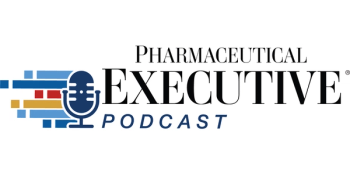
Potential Legal Action Against PD-1 Inhibitor Label Restrictions for Gastric Cancers
Ron Lanton, Partner, Lanton Law, discusses potential challenges that will come as a result of the FDA’s recent move to tighten label restrictions on PD-1 inhibitors for gastric cancers.
PE: What legal defenses or strategies might companies consider arguing in favor of keeping broader indications for their PD-1 inhibitors in gastric cancers?
Lanton: I think that many providers have said that limiting the use of PD-1 inhibitors in gastric cancer is not going to help anybody. I think that one legal defense that could be used is that biomarkers limit access, maybe based on a genetic discrimination claim, which I haven’t seen in a couple of years. That’s kind of died off from what I’ve seen. It’s still there, but it’s not in the news the way it used to be. But to continue on this thought, I think the use of biomarkers is key in clinical studies. I think that a lot of people are afraid that using them in such a strict manner is going to undermine a lot of the clinical studies and limit access for patients who have been accepted under the Right to Try laws. It’s a volatile topic, but it’s definitely going to come back to the forefront with something like this.
Full Interview Summary: The FDA’s recent challenges to the broad labeling of PD-1 inhibitors for gastric cancers, particularly around PD-L1 expression, could have far-reaching legal, regulatory, and strategic implications for pharmaceutical companies and healthcare providers. This shift could significantly restrict patient access to these treatments by mandating a threshold for PD-L1 expression, which is anticipated to exclude a large portion of patients, particularly those with low PD-L1 expression levels. These patients, lacking alternative treatment options, may initiate litigation, claiming denial of necessary treatment.
From a regulatory standpoint, companies will need to revise labeling to specify PD-L1 thresholds, impacting compliance procedures and possibly requiring additional studies. This narrowing of indications is also likely to increase the cost of these therapies, potentially limiting their inclusion in insurance formularies and intensifying market access challenges. Consequently, insurers might also face legal scrutiny from patients and providers who feel that access is unfairly limited due to the new labeling standards. Moreover, product liability claims could arise if adverse events occur under a broader indication, adding further risk.
Pharmaceutical companies may argue that biomarkers can restrict access, which could touch on genetic discrimination concerns, though the Genetic Information Nondiscrimination Act (GINA) may limit this defense’s applicability. This labeling challenge could also impact future drug development strategies, as companies may become more cautious about targeting treatments based on specific biomarkers. The FDA’s stance may deter innovation by slowing research and development (R&D) timelines, as companies may hesitate to invest in drugs with narrow patient populations. This situation may also rekindle debate around Right to Try laws, which aim to broaden treatment access for critically ill patients. Overall, the FDA’s challenge is poised to reshape market dynamics and legal risks, creating a complex landscape for manufacturers and healthcare providers alike.
Newsletter
Lead with insight with the Pharmaceutical Executive newsletter, featuring strategic analysis, leadership trends, and market intelligence for biopharma decision-makers.




